

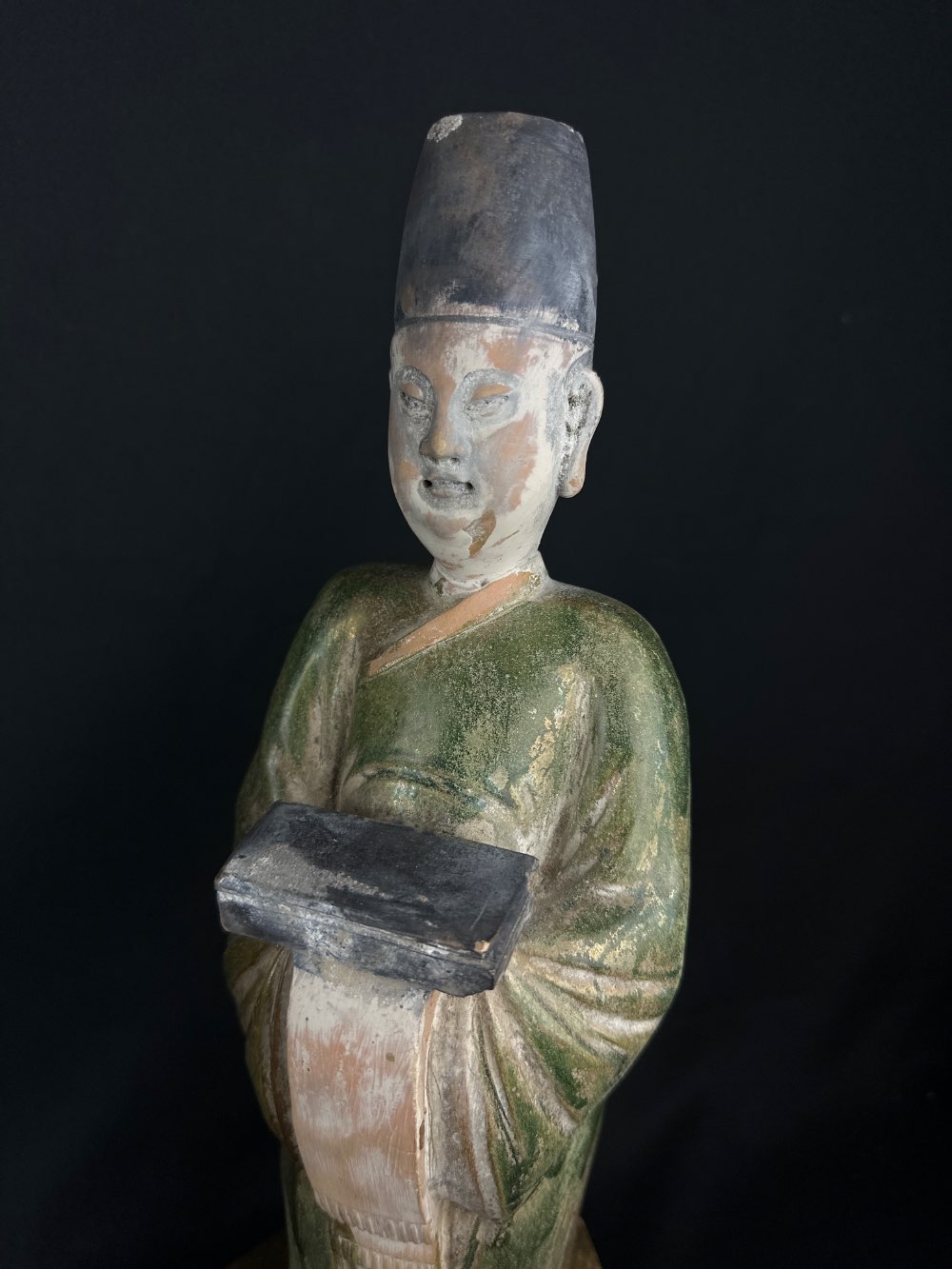



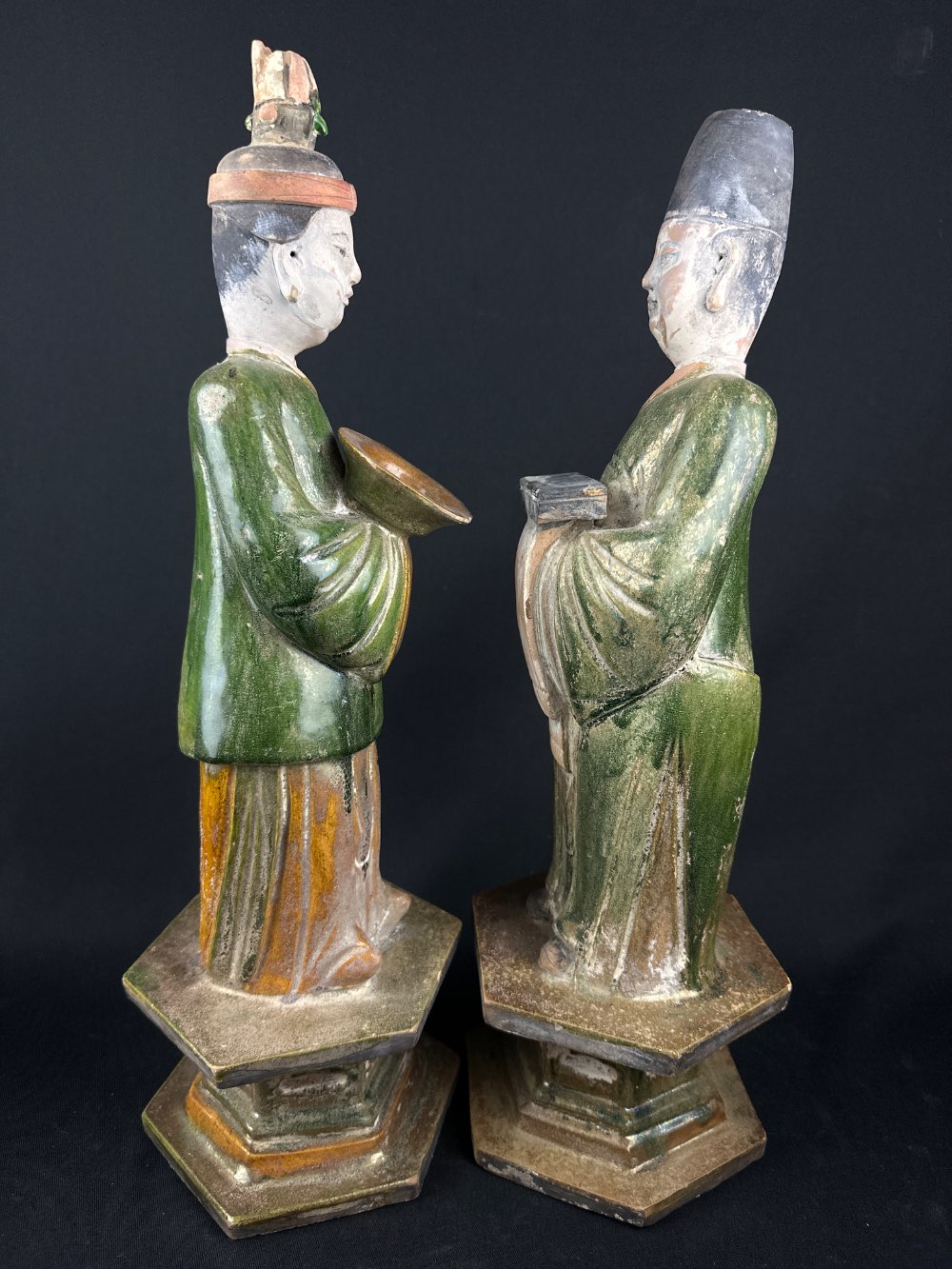
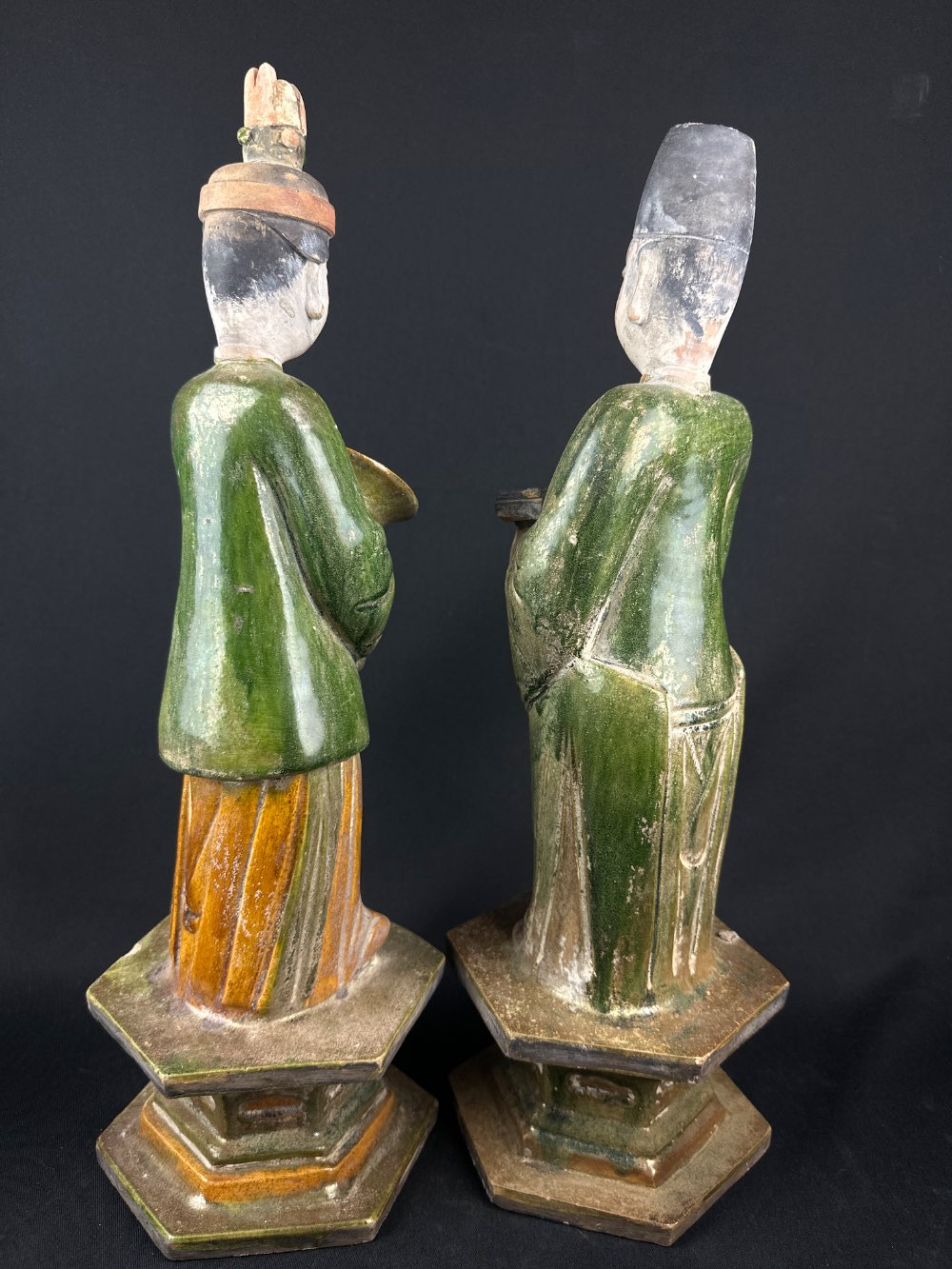


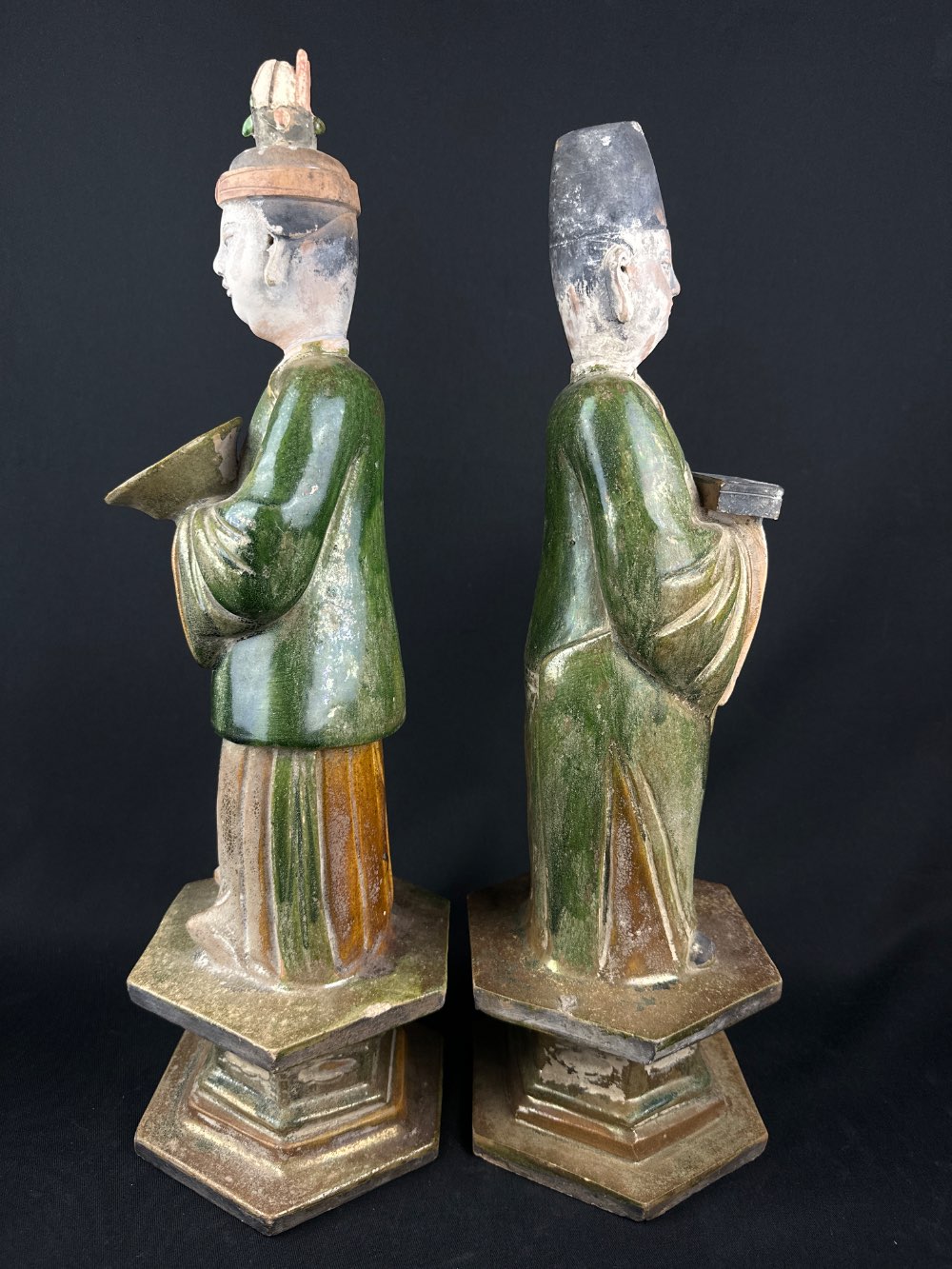

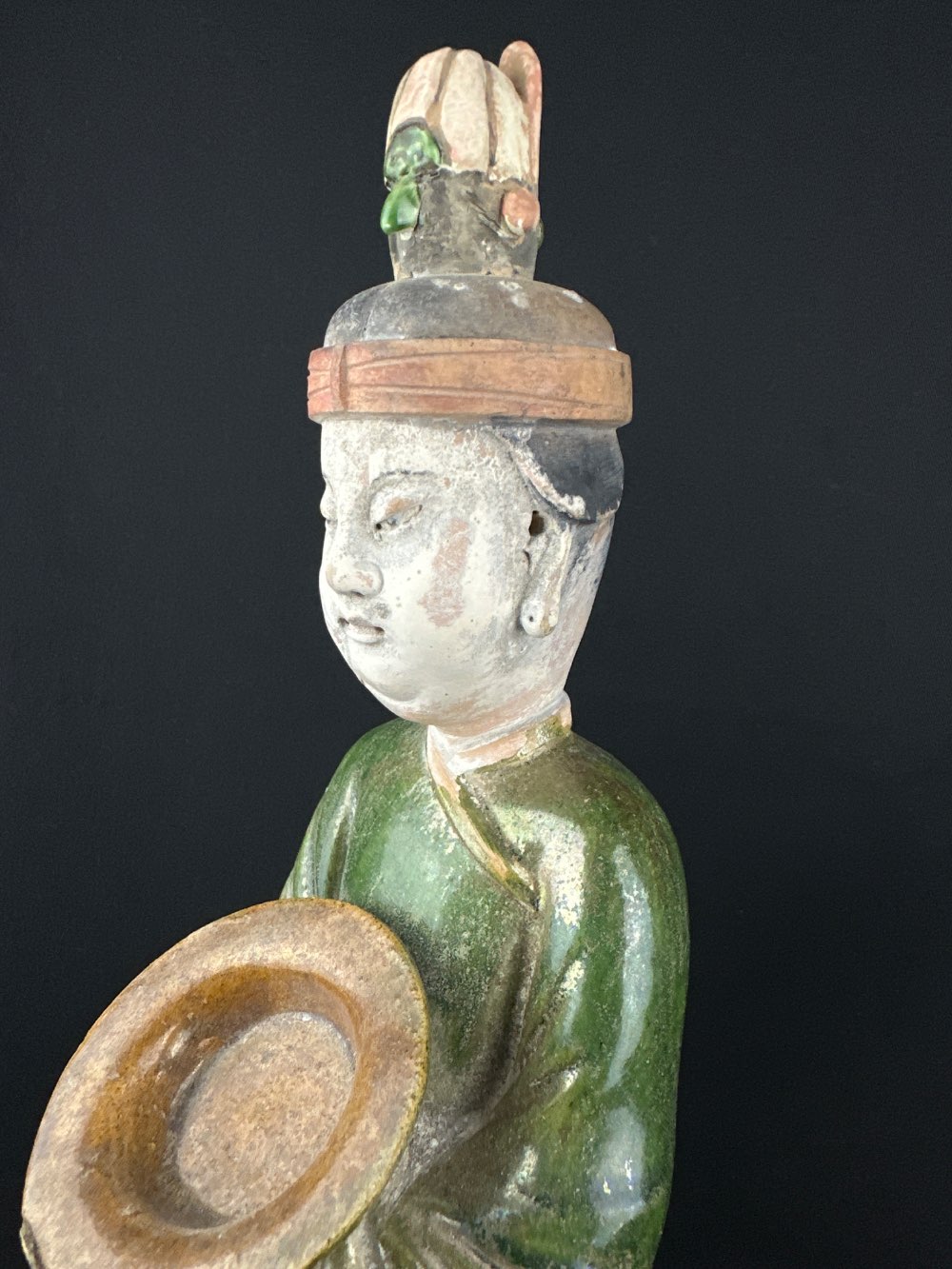








Couple of large Pottery figures from the Ming Dynasty (1368-1644 AD), TL tested
Couple of large Pottery figures from the Ming Dynasty (1368-1644 AD), TL tested
- Country: China
- Period: Ming Dynasty (1368-1644 AD)
- Material: Terracotta, green glazed and black and white pigments
- Size: 46 + 48 cm
- TL test is included
Chinese Sancai Ming pottery refers to a distinct style of funerary ceramics from the Ming dynasty (1368–1644) that uses the sancai ("three colors") glaze technique—originally developed during the Tang dynasty but revived and refined under the Ming for tomb use. These ceramics are vivid, highly symbolic, and offer insight into Ming dynasty beliefs, status symbols, and craftsmanship.
What is Sancai?
- Sancai (三彩) means "three colors," typically using green, amber (brownish-yellow), and cream glazes.
- Despite the name, more than three colors are sometimes used, with occasional additions of blue, black, or aubergine.
- The technique involves low-fired lead glazes applied to earthenware, creating vibrant, flowing patterns after firing.
Sancai Pottery in the Ming Dynasty
While the Tang dynasty pioneered sancai for decorative and burial wares, the Ming dynasty reintroduced it primarily for funerary purposes—especially to accompany the wealthy and elite into the afterlife.
Typical Ming sancai tomb wares include:
- Figures of attendants: male and female servants, warriors, eunuchs
- Animals: horses, camels, dogs, and mythical creatures (such as qilin and dragons)
- Civil and military officials: Confucian in posture and symbolism
- Architectural models: miniature towers, houses, stables, granaries
- Funerary processions: parades of pottery figures meant to replicate rituals and rank
These were placed in tombs to serve the deceased in the afterlife, providing status, protection, and comfort.
Key Features
- Highly stylized poses and facial expressions
- Flowing glaze that runs and blends over the surface, often giving a dynamic, almost painterly effect
- Figures often have realistic proportions, but their expressions and stylized robes reflect Confucian and Daoist ideals
- The lead-based glazes give the ware a glossy, glass-like finish, but they make these artifacts sensitive to light and humidity
Symbolism and Cultural Role
- Color symbolism: Green (growth, life), amber (wealth, power), and cream/white (purity, mourning)
- Figures were ranked by size and detail to reflect the social hierarchy of the deceased
- Ming sancai ware was a statement of status and piety, showing concern for the spiritual well-being of ancestors
- These wares reflected Confucian values of order, hierarchy, and ritual correctness, combined with Daoist beliefs in spiritual continuity
Where They’re Found
- Most examples have been excavated from Ming tombs in northern China, especially around Beijing, Henan, and Shaanxi
- Many are housed in major museums, such as the Palace Museum, the British Museum, and the Metropolitan Museum of Art
Summary
Ming dynasty sancai pottery is a fascinating blend of artistry, ritual, and symbolism. These funerary wares brought vivid life to the afterlife, using color, form, and figures to reflect the beliefs, power structures, and artistic achievements of the Ming era. While rooted in Tang dynasty traditions, they became uniquely Ming in their ceremonial purpose and elaborate iconography.
Please send an e-mail via below form, WhatsApp or call to order or get more information about this object.
We can communicate in English, Deutsch and Nederlands!
